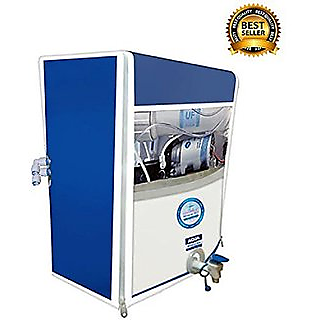What is AMC in water purifier?
The amc (ammonia-nitrogen) and dh (dissolved hydrogen) contents in the water are some of the most important quality parameters. They reflect the pollution degree, operating conditions and equipment management level of a water purifier. The lower the content of amc and dh, the better wate purification quality. A higher content results in an increase in sludge that clogs filters, membranes and channels; it requires more frequent cleaning or replacement of filters or membranes which lead to reduced operation efficiency.The amc and dh content also determines how well the water will be extracted. At certain concentrations, water is adsorbed. At lower concentrations, water is dissolved. Conversely, at a higher concentration in the amc or dh of the water, more dissolved water will be adsorbed as it becomes more viscous and difficult to pass through filters. Also, if residual chlorine or fluoride levels are high in the water (above 0.2 mg/l of each), dissolved electrolytes cannot be adequately extracted and adsorbed equipment will become saturated resulting in chemical damage to technology used for purification and reduced efficiency of operation due to sluggish or incomplete filtration.
Image source: https://www.reliancedigital.in/
In general, the amc and dh content should be below 0.5 ppm and 3 ppm, respectively. A lower content in the water of these two can be achieved through proper operation of the purifier. For instance: using a properly designed and maintained prefilter to remove suspended solids from raw water; using a high quality carbon block filter (excluding adsorption by-products) to remove dissolved organics; using silver impregnated semi-permeable membranes for reverse osmosis; and regularly replacing filters as necessary (filters should be changed every 6 months). For silica gel and bentonite, the amc content should be no higher than 0.2 ppm and 3.0 ppm, respectively. For activated alumina, the amc content should be no higher than <0.3 ppm and 2 ppm, respectively.
Water purifiers should also maintain relatively high levels of dh (dissolved hydrogen). This will help maintain a dissolved air pressure with the process water (5-6 pounds per square inch) that allows for proper operation of an air washer inlet filter to trap microorganisms and fine particulates in the water to keep them from being discharged into the drain line / sewage system as sludge or sediment. This also improves the surface tension of the water in the process line and traps even more fine particles as a result.
All of these functions, i.e., removal of particles, stripping of dissolved organics, adsorption and dissolution, are accomplished by an amc and dh content that is below 0.5 ppm and 3 ppm, respectively. If a water purifier cannot maintain these levels of amc and dh, then there are other problems with their operation that need to be addressed.
Image source: https://www.shopclues.com/
The most common problem is the failure to flush all of the residual chemicals out of the system at the conclusion of each treatment cycle. Ammonia is highly soluble in water. It will dissolve into raw or treated process water and can remain in solution for days or weeks. The solution generally has a pH above 5.5 which further enhances its stability in solution and its ability to adsorb onto filter media such as active carbon or silver impregnated semi-permeable membranes that are exposed to it without being removed from exposure before moving on to another treatment stage (i.e.

Comments
Post a Comment